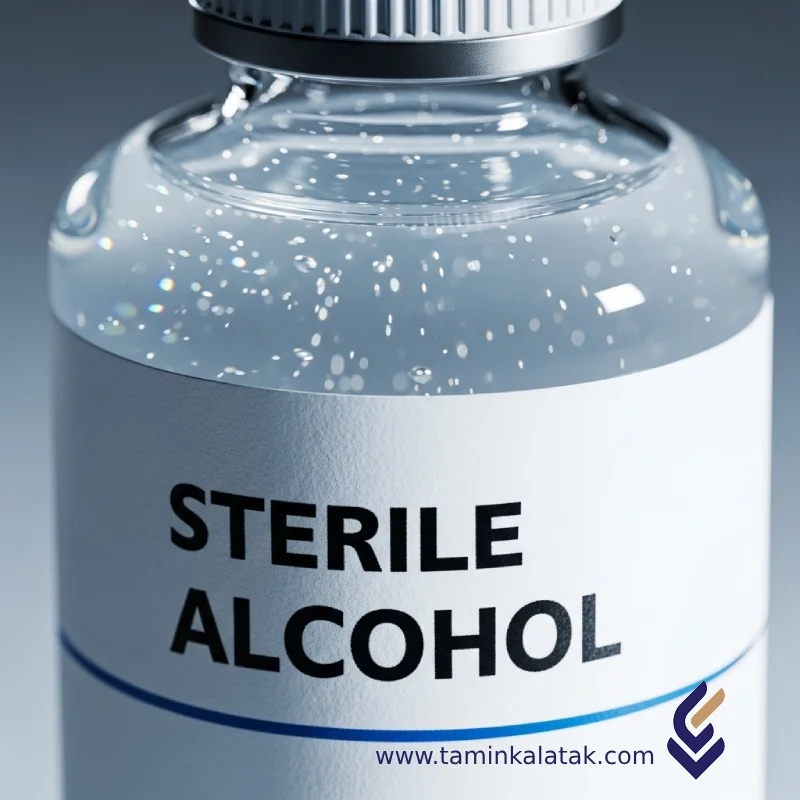Stearyl alcohol
Stearyl alcohol is a sterilized alcoholic solution, typically based on 70% ethanol or 70% isopropanol, produced under controlled, aseptic conditions to be free from microorganisms and suspended particles.
It is widely recognized as a rapid and effective disinfectant in medical, laboratory, pharmaceutical, and industrial environments.
Chemical Structure of Stearyl alcohol
-
Active Ingredient:
Ethanol (CH₃CH₂OH, CAS No. 64-17-5) or Isopropanol (CH₃CHOHCH₃, CAS No. 67-63-0) -
Carrier:
Sterile distilled water, maintaining a disinfectant concentration of 70–75% (v/v) -
Solution Structure:
A clear, homogeneous, and microbe-free solution capable of penetrating bacterial cell walls during phospholipid disruption -
Optimal Concentration (70%) is used for maximum disinfectant efficacy, enabling effective penetration of microbial proteins and cell membranes.
Physical and Chemical Properties
| Property | Description / Value |
|---|---|
| Appearance | Colorless or slightly tinted liquid with a characteristic alcoholic or mildly aromatic odor |
| Boiling Point | Ethanol: 78.2 °C • Isopropanol: ~82.6 °C |
| Solubility | Completely miscible with water and many organic solvents |
| Flash Point | Low (highly flammable) |
| Sterility | Filtered (e.g., through 0.2 μm membranes) and sometimes gamma-irradiated |
| Microbial Load | None — sterile and particle-free |
Applications of Stearyl alcohol
-
Pre-injection and surgical skin disinfection
-
Disinfection of medical and laboratory equipment surfaces
-
Ingredient in hand sanitizing gels and solutions
-
Sterilization of biomedical and laboratory instruments
-
Surface disinfection in pharmaceutical and vaccine production lines
-
Cleaning and sanitizing cosmetic and medical devices
-
Use in highly controlled industrial or biomedical environments, such as operating rooms and biosafety laboratories (BSL-2/3)
Advantages of Stearyl alcohol
-
Rapid and broad-spectrum disinfection against bacteria, viruses, and fungi
-
Non-corrosive to metals and many sensitive materials
-
No rinsing required after application
-
Suitable for sterile environments, including operating rooms and viral labs
-
Skin-compatible in formulations containing moisturizers or glycerin
-
Fast evaporation leaving no residue on surfaces
Disadvantages and Limitations
-
Highly flammable — requires controlled storage and handling conditions
-
May cause skin dryness with frequent use (if no moisturizer is added)
-
Ineffective against spore-forming bacteria
-
Requires sterile, evaporation-resistant packaging for preservation
Stearyl alcohol
| Products | Chemical formula | CAS number | Grade | Solubility in water | Vapor pressure | Melting point | Density (at 20°C) | Physical appearance |
|---|---|---|---|---|---|---|---|---|
| Ethanol and/or Isopropanol in 70% solution | C₂H₆O (ethanol) or C₃H₈O (isopropanol) | 64‑17‑5 (ethanol, 67‑63‑0 (isopropanol) | Sterile Grade (70% or less), Pharmaceutical/BP/USP – Sterilized and purified | (miscible) | Ethanol: 5.95 kPa (~44 mmHg); Isopropanol: similar | Ethanol: −114.1 °C; Isopropanol: −89 °C | Ethanol: 0.789 g/cm³; Isopropanol: 0.786 g/cm³ | Clear, colorless to slightly yellow liquid |







